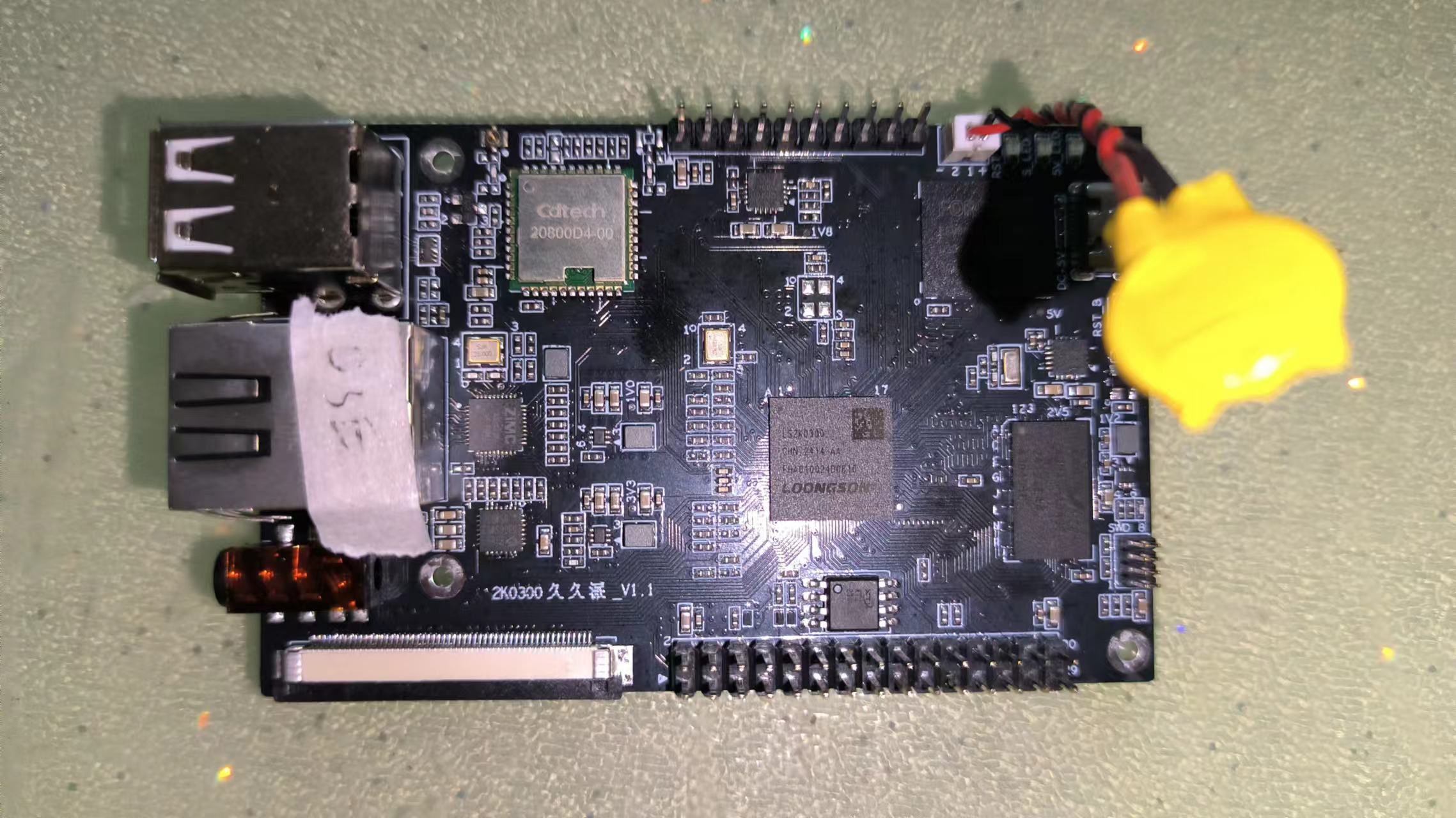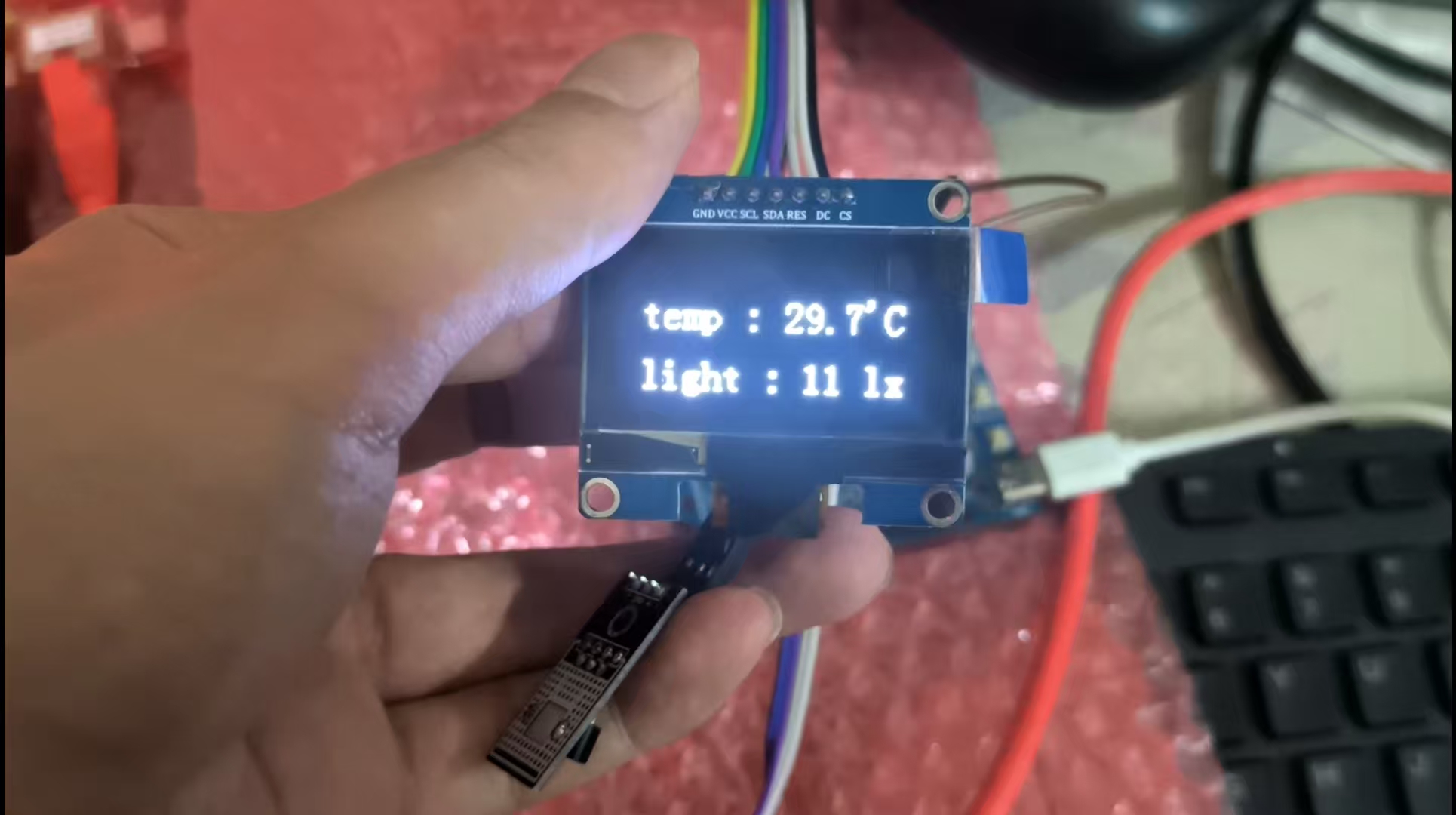PSoc™62开发板之rtc时间获取
实验目的
2.OLED屏幕显示当前时间戳
实验准备
- PSoc62™开发板
- SSD1306 OLED模块
- 公母头杜邦线
芯片资源
PSoC 6系列MCU时钟系统由以下几部分组成,PSoc62™开发板没有接外部时钟源,所以只能从IMO、ILO、PILO里边配置
-
- 8-MHz internal main oscillator (IMO)
- 32-kHz internal low-speed oscillator (ILO)
- Precision 32-kHz internal low-speed oscillator (PILO)
- 三个外部的时钟源
- External clock (EXTCLK) generated using a signal from an I/O pin
- External 16–35 MHz crystal oscillator (ECO)
组件配置
rtc配置,这里的RTC_USING_LSI指的是ILO

使能u8g2软件包,这里使用软件的方式模拟i2c时序
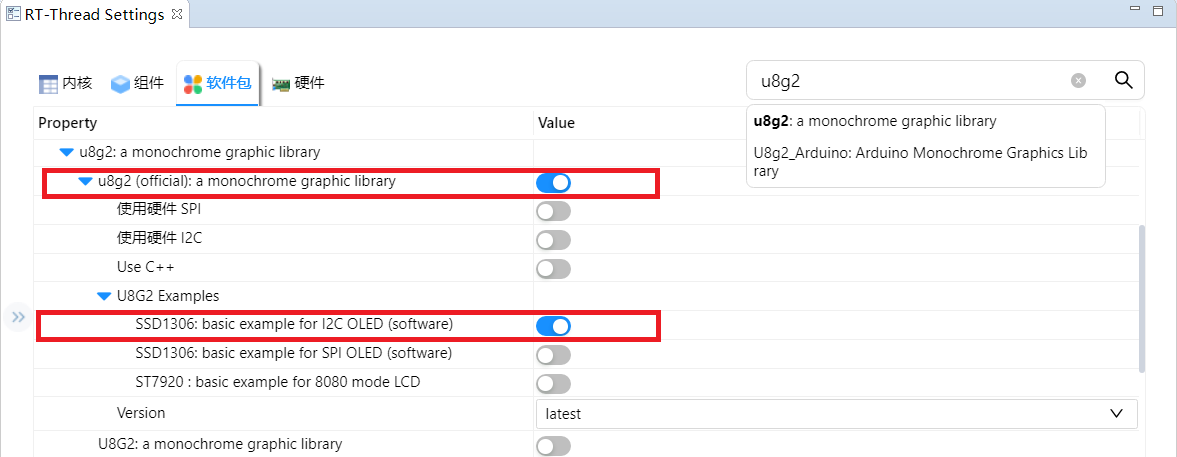
注意要在代码里边绑定i2c引脚,pin number和GPIO的对应关系:P8.0 : 8 x 8 = 64,P8.1 : 8 x 8 + 1 = 65
#define OLED_I2C_PIN_SCL 64 // P8.0
#define OLED_I2C_PIN_SDA 65 // P8.1模块电路
GPIO引脚
MCU_ARD_SCL -> P8.0
MCU_ARD_SDA -> P8.1
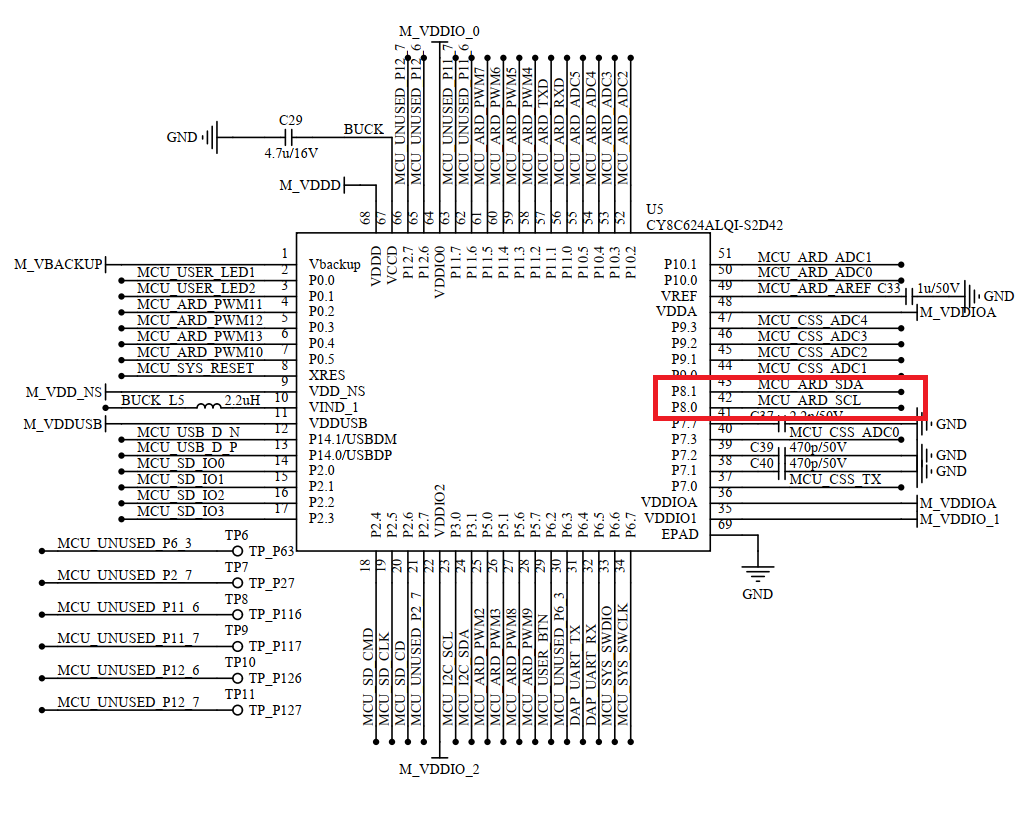
模块连接图
右侧排母从上往下第1、2引脚分别对应SCL、SDA

实物连接
依次连接OLED模块的VCC、GND、SDL、SDA引脚
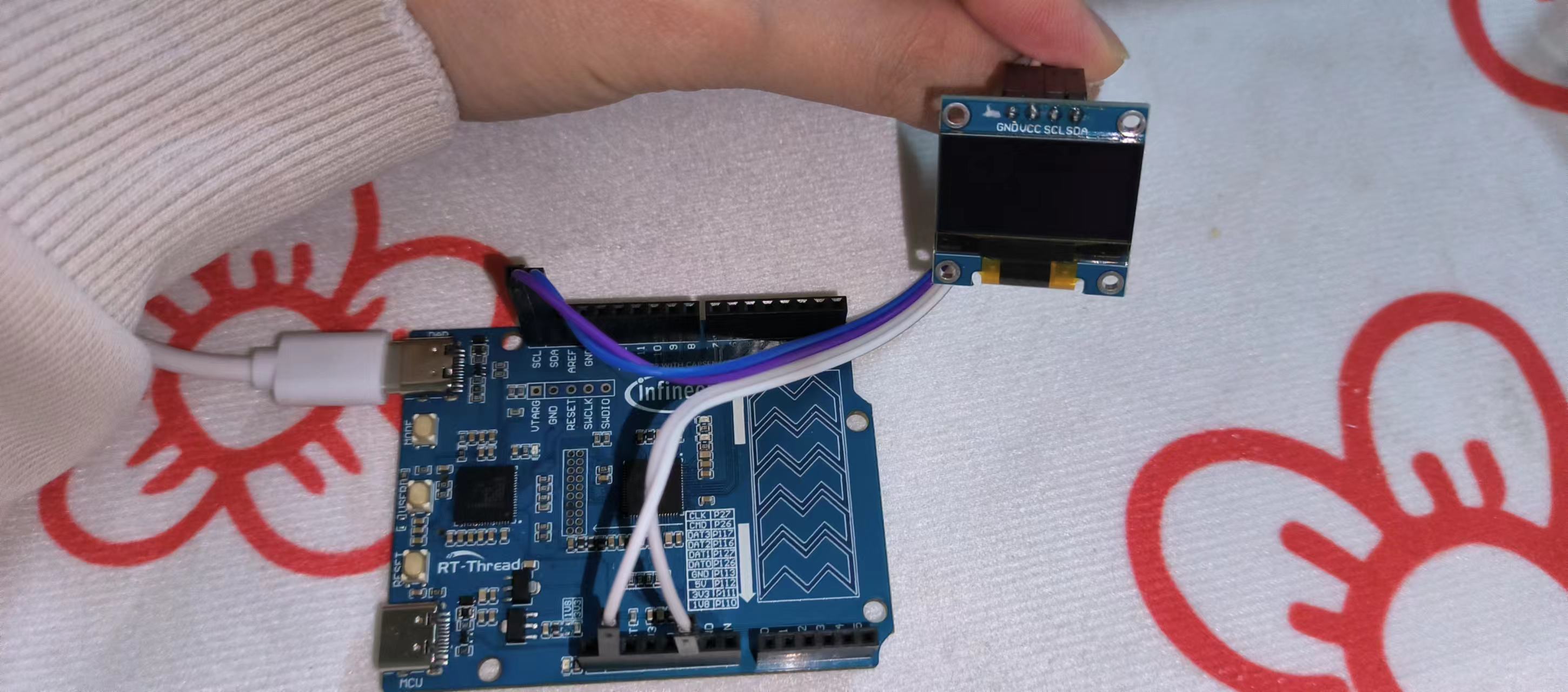
程序设计
Infineon PSoc™62时钟源设置代码
#ifdef BSP_RTC_USING_LSE
Cy_RTC_SelectClockSource(CY_RTC_CLK_SELECT_WCO);
#else
Cy_RTC_SelectClockSource(CY_RTC_CLK_SELECT_ILO);
#endif由于RT-Thread HAL_Drivers不太完善,这里需要修改RTC HAL层的代码,把上面的代码添加到rt_hw_rtc_init里边去
static int rt_hw_rtc_init(void)
{
rt_err_t result = RT_EOK;
ifx32_rtc_dev.ops = &_rtc_ops;
if (rt_hw_rtc_register(&ifx32_rtc_dev, "rtc", RT_DEVICE_FLAG_RDWR, RT_NULL) != RT_EOK)
{
LOG_E("rtc init failed");
result = -RT_ERROR;
}
else
{
LOG_D("rtc init success");
}
#ifdef BSP_RTC_USING_LSE
Cy_RTC_SelectClockSource(CY_RTC_CLK_SELECT_WCO);
#else
Cy_RTC_SelectClockSource(CY_RTC_CLK_SELECT_ILO);
#endif
if (cyhal_rtc_init(&rtc_obj) != RT_EOK)
{
LOG_E("rtc init failed.");
return -RT_ERROR;
}
return RT_EOK;
return result;
}OLED驱动,读取当前系统时间戳并显示到屏幕
void oled_display()
{
time_t now;
struct tm *p_tm;
u8g2_t u8g2;
char buffer[50];
// Initialization
u8g2_Setup_ssd1306_i2c_128x64_noname_f( &u8g2, U8G2_R0, u8x8_byte_sw_i2c, u8x8_gpio_and_delay_rtthread);
u8x8_SetPin(u8g2_GetU8x8(&u8g2), U8X8_PIN_I2C_CLOCK, OLED_I2C_PIN_SCL);
u8x8_SetPin(u8g2_GetU8x8(&u8g2), U8X8_PIN_I2C_DATA, OLED_I2C_PIN_SDA);
u8g2_InitDisplay(&u8g2);
u8g2_SetPowerSave(&u8g2, 0);
// Draw Graphics
/* full buffer example, setup procedure ends in _f */
u8g2_ClearBuffer(&u8g2);
u8g2_SetFont(&u8g2, u8g2_font_ncenB08_tr);
u8g2_DrawStr(&u8g2, 1, 18, "U8g2 on RT-Thread");
u8g2_SendBuffer(&u8g2);
u8g2_SetFont(&u8g2, u8g2_font_unifont_t_symbols);
u8g2_DrawGlyph(&u8g2, 112, 56, 0x2603 );
u8g2_SendBuffer(&u8g2);
for (;;)
{
u8g2_ClearBuffer(&u8g2);
u8g2_SetFont(&u8g2, u8g2_font_ncenB08_tr);
now = time(RT_NULL);
p_tm = localtime(&now);
memset(buffer, 0, 50);
snprintf(buffer, 50, "%d-%d-%d %d:%d:%d\n", p_tm->tm_year+ 1900, p_tm->tm_mon + 1, p_tm->tm_mday, p_tm->tm_hour, p_tm->tm_min, p_tm->tm_sec);
u8g2_DrawStr(&u8g2, 1, 18, buffer);
u8g2_SendBuffer(&u8g2);
rt_thread_mdelay(1000);
}
}整合代码
#include <rtthread.h>
#include <rtdevice.h>
#include <time.h>
#include "drv_gpio.h"
#include "drivers/alarm.h"
#include <rtdbg.h>
#include <u8g2_port.h>
#define OLED_I2C_PIN_SCL 64 // P8.0
#define OLED_I2C_PIN_SDA 65 // P8.1
#define RTC_NAME "rtc"
static rt_device_t device = RT_NULL;
static int uesr_rtc_init(void)
{
rt_err_t ret = RT_EOK;
time_t now;
device = rt_device_find(RTC_NAME);
if (!device)
{
rt_kprintf("find %s failed!", RTC_NAME);
return RT_ERROR;
}
if(rt_device_open(device, 0) != RT_EOK)
{
rt_kprintf("open %s failed!", RTC_NAME);
return RT_ERROR;
}
ret = set_date(2024, 1, 20);
if (ret != RT_EOK)
{
rt_kprintf("set RTC date failed\n");
return ret;
}
ret = set_time(16, 55, 50);
if (ret != RT_EOK)
{
rt_kprintf("set RTC time failed\n");
return ret;
}
now = time(RT_NULL);
rt_kprintf("RTC device init success,now time is %s\n", ctime(&now));
return ret;
}
INIT_APP_EXPORT(uesr_rtc_init);
void oled_display()
{
time_t now;
struct tm *p_tm;
u8g2_t u8g2;
char buffer[50];
// Initialization
u8g2_Setup_ssd1306_i2c_128x64_noname_f( &u8g2, U8G2_R0, u8x8_byte_sw_i2c, u8x8_gpio_and_delay_rtthread);
u8x8_SetPin(u8g2_GetU8x8(&u8g2), U8X8_PIN_I2C_CLOCK, OLED_I2C_PIN_SCL);
u8x8_SetPin(u8g2_GetU8x8(&u8g2), U8X8_PIN_I2C_DATA, OLED_I2C_PIN_SDA);
u8g2_InitDisplay(&u8g2);
u8g2_SetPowerSave(&u8g2, 0);
// Draw Graphics
/* full buffer example, setup procedure ends in _f */
u8g2_ClearBuffer(&u8g2);
u8g2_SetFont(&u8g2, u8g2_font_ncenB08_tr);
u8g2_DrawStr(&u8g2, 1, 18, "U8g2 on RT-Thread");
u8g2_SendBuffer(&u8g2);
u8g2_SetFont(&u8g2, u8g2_font_unifont_t_symbols);
u8g2_DrawGlyph(&u8g2, 112, 56, 0x2603 );
u8g2_SendBuffer(&u8g2);
for (;;)
{
u8g2_ClearBuffer(&u8g2);
u8g2_SetFont(&u8g2, u8g2_font_ncenB08_tr);
now = time(RT_NULL);
p_tm = localtime(&now);
memset(buffer, 0, 50);
snprintf(buffer, 50, "%d-%d-%d %d:%d:%d\n", p_tm->tm_year+ 1900, p_tm->tm_mon + 1, p_tm->tm_mday, p_tm->tm_hour, p_tm->tm_min, p_tm->tm_sec);
u8g2_DrawStr(&u8g2, 1, 18, buffer);
u8g2_SendBuffer(&u8g2);
rt_thread_mdelay(1000);
}
}
int main(void)
{
oled_display();
return 0;
}实验效果
在msh终端敲命令date,即可查看开发板rtc时间

同时OLED模块实时显示当前时间
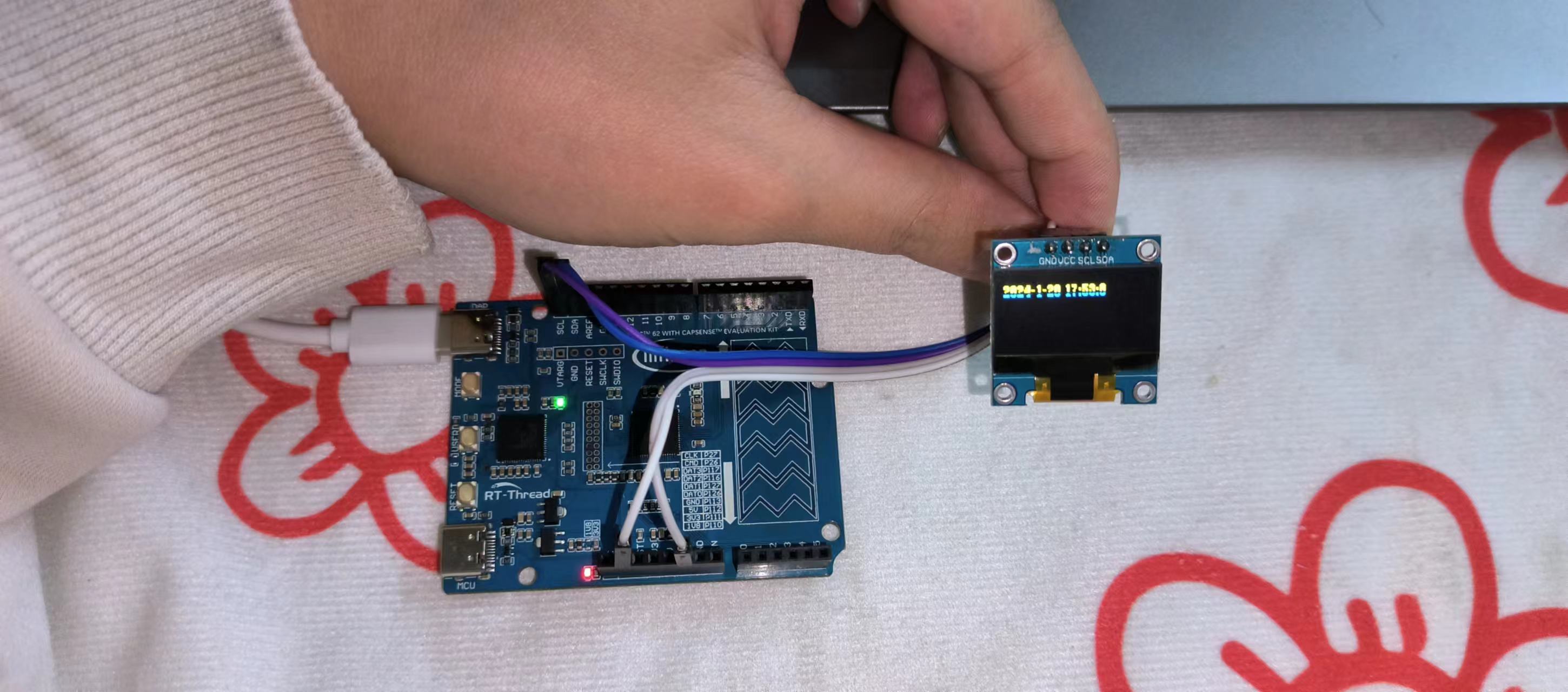
阅读剩余
版权声明:
作者:hywing
链接:https://iotstuff.cn/psoc62-mcu-rtc/
文章版权归作者所有,未经允许请勿转载。
THE END
